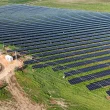Over 400 million students worldwide have experienced school closures due to extreme weather events since 2022, according to a new World Bank report. Titled Choosing Our Future: Education for Climate Action, the report highlights the severe impact of climate change on education in low- and middle-income countries and offers solutions to harness education as a tool for climate action. The report estimates that a one-time investment of $18.51 per child can help mitigate climate-related educational disruptions.
The report reveals that low-income countries are hit hardest by the climate crisis, with an average of 18 school days lost per year due to extreme weather, compared to just 2.4 days in wealthier nations. It also emphasises that children today will face a far greater number of climate-related disasters over their lifetimes. A 10-year-old in 2024, for instance, will experience three times as many floods, five times as many droughts, and 36 times as many heatwaves as a 10-year-old in 1970. Even when schools remain open, learning is still significantly disrupted by rising temperatures and other climate impacts. In Brazil, students in the poorest municipalities could lose up to half a year’s worth of learning due to heat alone.
“Young people are directly impacted by this crisis, and they are eager to act. Yet education systems are not delivering the information, skills, and opportunities they need in a climate-affected world. This is a missed opportunity to harness the power of education so we can adapt to and mitigate the climate crisis,” said Mamta Murthi, Vice President of the People Vice Presidency at the World Bank.
Education remains largely underfunded in climate financing. According to the report, only 1.5% of climate finance is directed towards education. However, the World Bank report suggests that just $18.51 per child can safeguard learning from climate impacts by improving classroom conditions, building resilient infrastructure, and training teachers in climate adaptation.
“The promising news is that there are many low-cost steps that governments can take to harness education and learning for climate action while adapting education systems to climate change. Improving school infrastructure, ensuring learning continuity, and leveraging students and teachers as effective agents of positive change can all contribute to a more liveable planet,” said Luis Benveniste, Global Director of Education at the World Bank.
The report also reveals a disconnect between young people’s desire to act and the lack of education on climate change. Surveys show that 65% of young people in eight low- and middle-income countries believe their futures are at risk if they don’t develop green skills, yet 60% say they haven’t learned enough about climate change in school. Data from 96 countries indicates that each additional year of education increases climate awareness by nearly 9%, highlighting the need for climate education to be integrated into school curricula.
With the demand for green skills outpacing supply in many developing nations, the report challenges common misconceptions. For example, 73% of young people believe that green jobs require STEM skills. However, the report shows that green jobs are available at nearly all skill levels. In the Philippines, for instance, 31% of green jobs are classified as medium-skill roles.
The report outlines a policy agenda for countries, including improving foundational skills, mainstreaming climate education, and building teacher capacity. By prioritizing green skilling and innovation, governments can help drive a shift toward sustainable practices and use education as a critical tool for climate resilience and action.





















